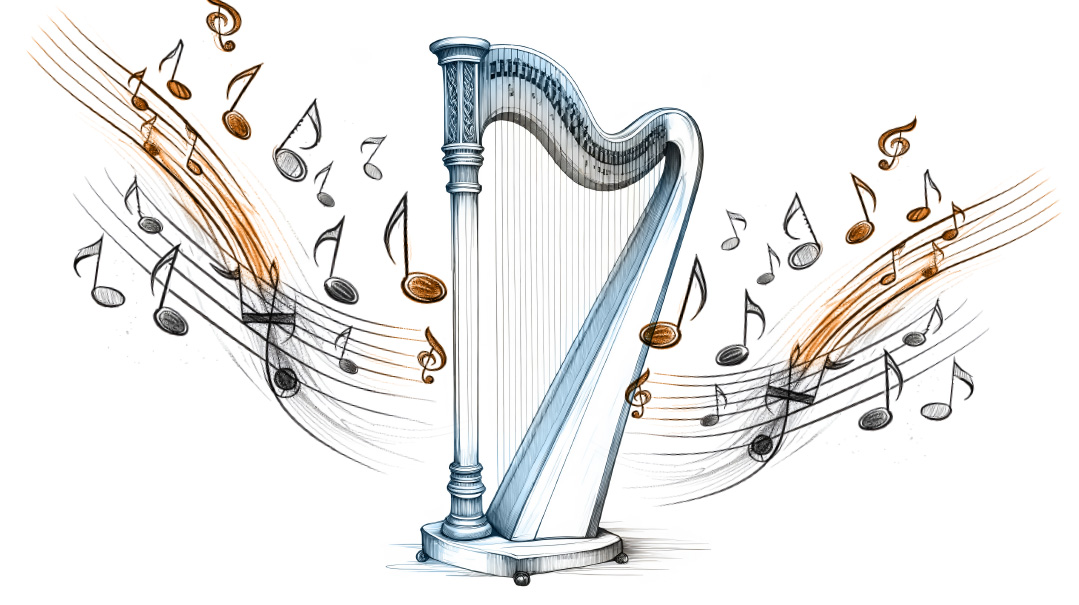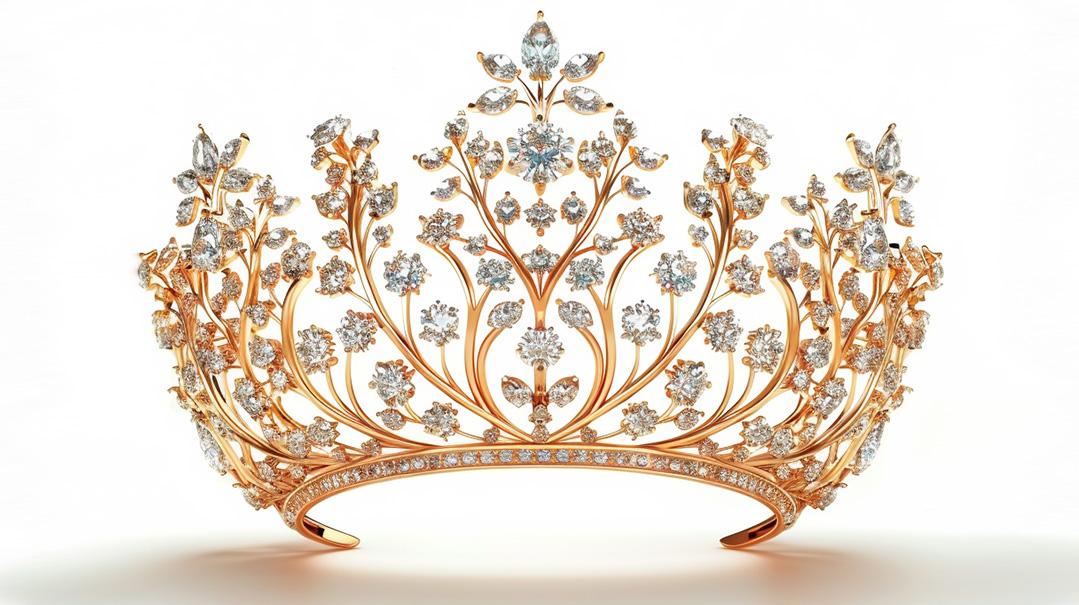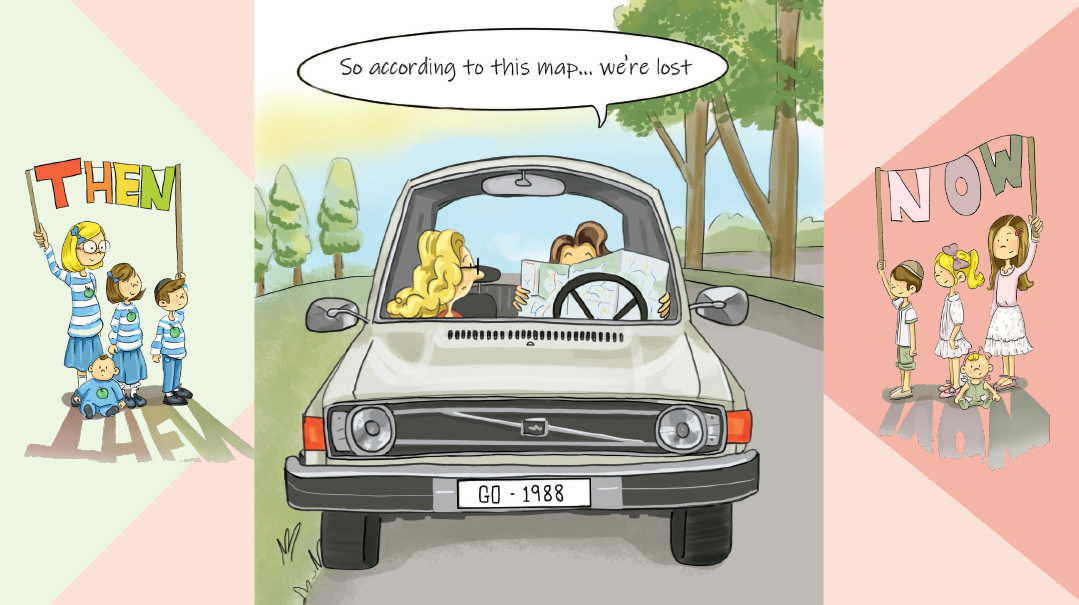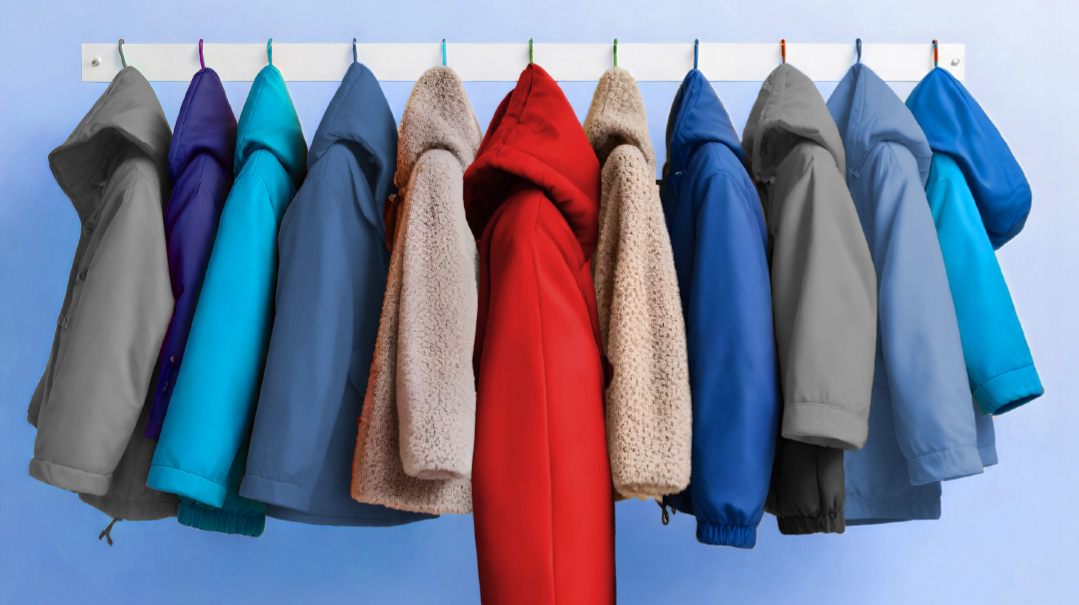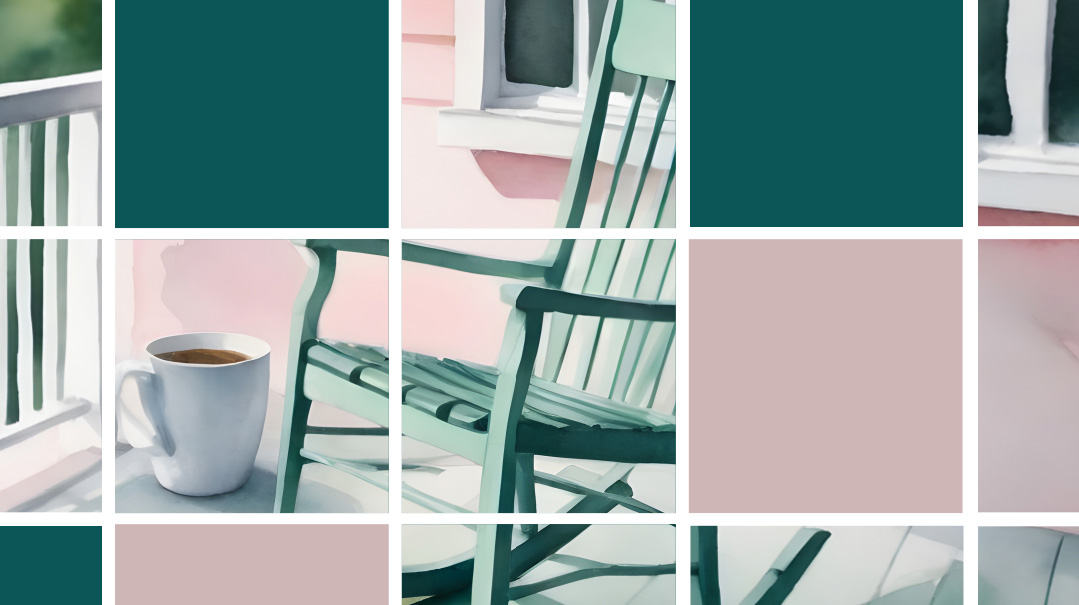The Body Knows

How do fiction writers bring their characters to life? Esty Heller investigates

W
riting fiction is a brutal form of torture.
We spend most of our lives dealing with the intricate complications that revolve around all things human. We deal with the vast and various sensitivities of the people in our lives. We deal with the issues of those nearest and dearest to us. We’re also expected to contend with the issues of people we barely know. I mean, seriously, we deal with ourselves.
That’s more than enough for most people.
Come along fiction writers, and they willingly fabricate lives and sit in front of computer screens (or windows, or kitchen sinks, or desired exotic locations such as the ocean, although that particular location is mainly reserved for fictitious fiction writers), breaking their heads seeking ideas for how to complicate their fictional characters’ lives.
Nuts, I know.
Don’t ask me why I do it.
A primary goal when crafting stories is to get readers invested in characters’ lives. To do so, the author needs to accurately convey the characters’ feelings at any given moment and invite the reader to feel along.
So what we’re really doing, outside of the actual storyline, is breathing life into these nonexistent people’s bodies. We strive to make these people feel so real, their emotions become a physical thing.
Characters’ feelings dictate the environment of the page. But while the reader needs to know what a character is feeling, as the writer, I try to avoid spelling out emotions; I’d rather have the reader deduce them through the characters’ actions and words.
But sometimes, to create the right effect, the writer needs to provide little cues. This is where we plant knots in pits of stomachs, lodge lumps in throats, and sprinkle goose bumps over arms.
The problem is that the go-to phrases for such cues are horribly generic. A knot in the pit of the stomach? I’m pretty sure that’s a capital offense of writing.
I always struggled with the task of coming up with alternative phrases to describe core feelings. The bank of default clichés tends to fly off a writer’s fingertips like basic punctuation. But it’s a flaw. Using those phrases means missing opportunities to weave specificity.
Once, in a desperate attempt to come up with the perfect phrase to describe my character’s impatience without having her tap or drum her fingers, I decided to do some research. Which body gesture shows impatience?
The answer — you could look it up yourself — was tapping/drumming fingers.
No, seriously.
If Google says so, who am I to argue, right?
But the discovery that Google and I (and the whole entire rest of the world) think the same way got me thinking. Those gestures are generic because they’re true. In real life, when a person is impatient, he will tap or drum his fingers.
Why?
I was curious. (And desperate. Even if I had Google backing me up, I still couldn’t litter my page with finger tapping. It’s boring, and, like I said, misses ripe opportunities to weave specificity.) So I started researching those gestures, and I learned that those phrases are hardly about writing technique. They’re about emotional anatomy, the physical sensations across our bodies associated with the vast range of feelings we experience.
It’s a science of its own. Literally.
Well. Character development, move aside. Time to change my PhD.
Treasure Map of Feelings
Wearing my new scientist hat (my chest puffed up with pride), I set out to explore the behind-the-scenes of my emotion-laden characters. To my fascination, I stumbled across various books, studies, experiments, and research papers on this topic.
In Finland, a team of scientists (myself regrettably not among them) asked people to map out where they felt different emotions on their bodies. The results were surprisingly consistent, even across cultures. People reported that happiness and love sparked activity across nearly the entire body, while depression had the opposite effect: It dulled feelings in the arms, legs, and head. Danger and fear triggered strong sensations in the chest, and anger was one of the few emotions that activated the arms.
What I learned is that when it comes to feelings, it’s not only about what you feel, but very much also where you feel it.
In my quest to untighten chests and eradicate butterflies from every last character’s stomach, I explored the concept of emotional body mapping. Those maps of the body show the regions whose activation increases or decreases when feeling specific emotions. Warm colors — red, yellow, and orange — show heightened physical sensations, while cool colors — various shades of blue — show dampened physical sensations.
I started making my own highly scientific observations. On the map, the legs of the bodies labeled Sadness, Surprise, Anxiety, Depression, and Shame are all colored in different saturations of blue. This helped me understand why the knees of a person (a fake one, obviously) go weak when, say, he gets an electricity cutoff notice in the mail. He experiences a combination of the above feelings, and physically feels it in the corresponding regions of his body. (Poor character. I’m sorry for inflicting all this suffering.)
According to the map, most emotions are strongly concentrated in the head, chest, and abdominal areas. This explains the salad of clichés surrounding those regions: chests tightening or expanding, hearts pounding or clenching, faces flushing or draining of color, stomachs twisting, knotting, contracting, and sinking.
The Happiness figure, I noticed, was completely colored in reds, oranges, and yellows. I found this validating, because I’m always worried that I’m copping out when I constantly have warmth spreading over my characters’ entire bodies. The map made me realize that if I find myself writing these words often, it’s simply because my characters are often happy, which is (hopefully) a good thing.
I also found it interesting that there’s only minimal heightened activity on the Surprise figure: No wonder my characters tend to freeze when, for example, they’re alone in a dark basement and hear the stairs creak. And the hands of Fear and Contempt, the root feelings behind impatience, look like red mittens. Can’t blame the finger tapping and drumming, can you?
While scientists hope that these body maps will one day help psychologists diagnose or treat mood disorders, I, with my PhD in frum fiction, am intrigued by the helpful admission into the bodies of my characters. Not only do I get to step into their shoes, I can get right under their skin (I’m sorry!) and feel it crawling or tingling.
The only challenge remained: Were my characters doomed to live clichéd lives?
I had a (markedly red) gut feeling that they were.
And that reality left me with a (bright yellow) lump in my throat.
Figure of Speech
At this point, I found myself balancing two hats on my head: that of the somatic scientist I’d just become, and the stubborn writer who tended to shadow so much of my thinking.
What do a scientist and a writer have in common?
An itch to experiment.
(And a tendency to lose track of time; I know, no need to rub it in.)
Attacked by this compounded itch, there was only one path forward.
Time to hit the lab.
THE EXPERIMENT
Recruit a group of experienced fiction writers (okay, recruit is a nice word. Beg them to spare you a few precious minutes on Erev Pesach to do somebody else’s writing work). Present a different scenario to each writer, asking her to describe her reactions to the scenarios as though she were the character facing these experiences.
It’s nice to have friends in high places.
It’s not nice to make them write formulaic descriptions to formulaic scenes.
But I wasn’t doing this to test their creativity or writing talent. It was a purely scientific experiment, and clichéd writing was literally what I was asking from them.
I sent them their scenes. They responded with their characters’ reactions. Then I had fun picking out all the physical sensations they described and matching them up with my body-heat map.
Scenario:
The contest results are in.
You don’t want to look. You’ve spent — okay, you’re embarrassed to admit how much time you spent writing your 100-word story for that famous contest. And what are the chances? Little wannabe-writer-you against the thousands of contestants? And now the results were posted, the email is in your inbox, and you don’t want to look, don’t want to lose that illogical ray of hope. Your entry never stood a chance, you know, but still….
You look.
It’s your name.
You won.
Rochel Samet reacts:
I won. I. Won.
My mouth is dry and my ears are ringing and there’s a strangled cry in my throat. I won! I won! Like I need to say the words out loud, even though there’s no one to hear me.
Maybe I’m dreaming. Hallucinating. I must be.
I close my eyes, force a deep breath into my nose, throat, chest. Feel my lungs expand.
Now. Read the email again.
My name is still there.
Analysis:
A dry mouth, ringing ears, a strangled cry in the throat, the closing of eyes — we’re looking at the bright-yellow glow on the faces of Happiness and Pride. In fact, the yellow is so strong around Happiness’s ears, it bleeds off the figure. Love is lit up around the mouth, too, which makes sense; this character has every reason to love herself right now.
Moving further down, as she takes a deep breath, the air travels down Pride’s brightly lit airway, until her lungs expand — in blinding yellow. If you ever wondered if chests actually puff with pride, Rochel just proved it!
(Although, Rochel, would you really do a Double Take upon receiving such news? Don’t you realize what a great writer you are?)
Scenario:
It had happened by accident. You helped your neighbor’s daughter create a model lesson, brainstorming ideas with her and coaching her on lesson development and pacing.
Word got around, and without you realizing it, you’ve founded a seasonal business: helping graduates win that coveted job. You’ve created a masterpiece template, almost like a formula where the girls just need to plug in the lesson material and they’re ready to face the classroom. You earn a reputation: If they hire you for guidance, they’re going to land that teaching job.
Until the year when not a single girl calls.
Where are all the future teachers?
One night a girl calls. She books you. But three days later, she cancels.
“What happened?” you ask her.
She explains that she got hold of a “model lesson kit” that gave her everything she needed.
You do some sleuthing. Sure enough, the “model lesson kit” that’s going around is a neat copy of your hard work.
Chanie Spira reacts:
My chest fills with something ugly, and my shoulders go weak. I feel my lungs fill with too much hot air. I can’t exhale because my throat becomes tight. Interestingly enough, I feel it in my legs, a strong thrumming of the sudden realization that there’s nothing I can do about the situation.
Analysis:
The chest, the lungs — hotbeds for strong feelings, which makes sense; it’s the heart’s residence, after all. There’s an explosion of heat on the Anger, Disgust, Sadness, and Surprise figures, which is certainly understandable for a person who experienced such betrayal. In particular, Disgust’s throat is a bright yellow, which easily explains why this character’s throat would become tight.
Legs? I scan the map. Ironically, legs with heated colors are dominant in positive-feeling figures, such as Happiness and Love. At the same time, the legs of Sadness and Depression are vivid blues, so the thrumming Chanie describes may be a dulled form of sensation, a surrender (there’s nothing I can do) rather than increased activation, which aligns with the dulled sensations that are exhibited in the upper leg area.
(Well, bright or dull, Chanie, all you need to do is add 5,000 words and turn this into your next Calligraphy story.)
Scenario:
Your broker knows which house your heart is set on. “It’s a matter of time before it goes on the market,” he keeps reassuring you.
But the house never makes it onto the market.
“Feingold bought 22 Harvest Road,” your husband tells you one day. “It was sold before it got listed.”
Feingold. Tziri Feingold, your classmate who’d all but been chased by success since kindergarten. Brains, looks, personality, even middos — she’d always been top in everything. Her children, you’re well aware, all take after her. They are every teacher’s dream and will land great shidduchim the minute they enter the parshah.
And now they’re going to live in the house you’ve been eyeing every day for the last few months.
No, they hadn’t done anything wrong. But somehow, when it came to Tziri Feingold, everything always went right.
Bracha Stein reacts:
My throat tightens. Tziri? Tziri Feingold?! My hands grip the edge of my desk so fiercely that my knuckles go white. I force myself to take a deep breath. In, out. I exhale, then spin my chair around to face my husband. “Um. Who got the house? Are you— but the broker….”
My hands are fists again.
Analysis:
You can’t blame this character’s negative feelings, and oh, wow, they’re terrifically concentrated in the fists. What is this power in our hands? Anger, Fear, Disgust, Contempt — they’re all on fire.
As for the breathing, that’s Envy at play. The figure’s face is heated up, all red, as is the chest. But there’s a colorless area between the chest and head, which may explain the exertion —forcing herself to take a deep breath; in, out — of the breathing pattern.
But really, I didn’t need to provide Bracha with this scenario to have her identify emotional anatomy. Pick up any Kichels strip — the characters’ feelings scream right out at you. And that, of course, gets Mishpacha’s readership to double over with laughter: the picture of Happiness.
Scenario:
The minute you spy the new girl on the block, you know you’re in for it.
You haven’t exchanged a word with the girl, but the signs are obvious. The gawky gait. The too-wide smile. The smear of something chocolaty on her T-shirt. And mainly, the way she stands too close to the person she’s talking to, the way her hands clumsily flap all over the place.
Something is off with this girl.
And she’s about your daughter’s age.
Your daughter has a lot of friends on the block. The neighbors knock on your door all day every day, wanting to play with her. Little Miss Popular; she’s cute and smart and fun.
From the window, you watch your daughter amid a cluster of neighbors, talking and laughing. The new girl notices them and walks right up, and you can’t breathe, you can’t watch this. The girls are going to make minced meat of the poor soul.
But then you observe your daughter break out of the circle. You can’t hear what she’s saying, but you see the genuine smile on her face, her open arms, and the obviously warm welcome that she extends to this new girl. Automatically, the rest of the girls greet her with the most inviting friendliness.
Your daughter — Little Miss Popular.
Rachel Newton reacts:
My jaw, locked so tight until now, relaxes as a smile slowly breaks open across my face.
The band across my chest releases itself, too, and I find myself breathing easier now, deep.
Unhurried.
And the band drops off completely to allow my lungs and chest to expand, as the knowledge of what has just happened rises and rises and warms my cheeks.
No one is watching so I keep the wide smile.
Analysis:
Rachel bridged us over from a collection of intense feelings — Anxiety, Fear, Shame — to the relief of those feelings, which manifest in a surge of Happiness and Pride. As long as this mother was uptight, the warm colors around the jaw and chest areas of those figures dominated her feelings, but the moment the negative emotions were released, all of it loosened into a mix of Happiness and Pride.
The Shame figure in particular has two bright-yellow blotches over its jaws, which was what this mother was gearing up to experience had her daughter not surprised her in such a pleasant manner.
Now all we need is for Rachel to tell us, in her inimitably beautiful language, the story behind this story.
Scenario:
When the door closes behind your daughter, your mind follows her down the stairs, after the tall, slim bochur with the smooth voice and pleasant countenance, after the hope that maybe, just maybe….
It’s a first date, but it’s the first first date in over a year, and you want — you so terribly and desperately want — your daughter to get engaged. To move on. To be happy.
Two hours later, she’s back home. You don’t even ask her how it went as she quietly parks her shoes near the door and tiptoes upstairs to her room.
Esther Kurtz reacts:
My eyes burn, my throat clenches, and my stomach craters. My hand involuntarily reaches out to her, but I hold myself back. She needs space, but I want to be her mother. My body vacillates, it knows maternal instinct, but my mind keeps it in check. She cries alone; I cry to my husband.
Analysis:
This one had me a little stumped over my smoking flasks. I’m guessing this character is filled with Sadness and is obviously dealing with hurt and despondency, which I’d match up with the Depression figure. But while this reaction makes perfect sense — of course this mother is in tears, and Esther even figured out a creative way to turn her crying into an “element,” Depression presents with dulled sensation in the eye area, and no impact at all in the throat or stomach areas.
I think the answer to this is Esther Kurtz. She doesn’t do the cliché. The end.
Scenario:
Sari Moses charges a lot for her diet plan, but you convince your husband — who was recently bitten by the budgeting bug — that paying money is the only way for you to reach your weight loss goals. He argues that it won’t help and that you should just accept yourself, he finds you beautiful the way you are, you’re not even fat, why kill yourself?
You tune him out. Men, what do they know? You sign up and plunge in. Salads and diet muffins, ten cups of water, no eating after seven o’clock! It’s ten days in, you’ve lost four pounds, you’re doing amazing, you feel perfectly heady.
You’re up to the point where you’ve convinced your sister and two friends to sign up. “I’m telling you, it’s really, really doable,” you assure them.
Then — you don’t know how this happens — but your kids beg you to bake chocolate croissants for Shabbos, and the smell is insane, you’re only going to taste, just one bite….
Ariella Schiller reacts:
Literally caught with my hand in the cookie jar. My stomach drops and I feel heat flood my face. Why. Why did he have to come in just then? Then again, I can eat what I want. I work hard. I purse my lips and turn away, avoiding his eyes. I wipe the crumbs on my skirt, and lick the last drops of chocolate off my lip.
Analysis:
I can’t help drawing a bit of a far-fetched connection with this one. The Surprise figure has a dim smudge of red in the stomach area, while Shame and Anxiety’s red middles are more pronounced. This makes me feel like when the stomach drops, in this case, it’s a loss of sensation caused by Surprise — caught red-handed — while at the same time, the same area is stimulated by her guilt, which stems from embarrassment (Shame) and stress (Anxiety). As for heat flooding the head — heat literally floods the head of these three figures, as well as that of the Contempt figure, which is what this poor, hungry wife may secretly be developing toward this whole pathetic diet situation.
Ariella, what I would really like to see is your next chapter of this story after this cliffhanger. Also, the croissant recipe, when you have a minute?
Cliché Cache
It was heartwarming (yellow chest!) to learn that my fellow writers turn to the same phrases I turn to, and for the same reason — because they’re accurate. Hearts do swell with Pride, toes tingle with Happiness, Shame will make you blush, and while Envy might not make your face turn an actual green, your facial components will definitely be aroused.
While I’ll still make every effort to avoid the clichés that make writing stuffy, my depressed characters’ shoulders will remain slumped; my frightened characters will still experience shivers up and down their spines; and my sad characters will still feel a hollowness in their arms and legs.
Now that I’ve established that my entire cliché cache doesn’t consist of mere figures of speech, all I need to do is come up with the stories that make palms sweat and mouths go dry.
I better start mapping my outline.
Before I get cold feet.
(Originally featured in Family First, Issue 889)
Oops! We could not locate your form.

